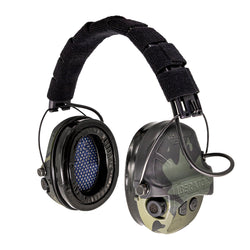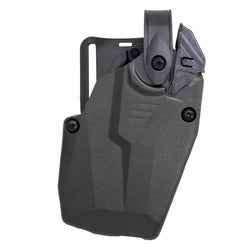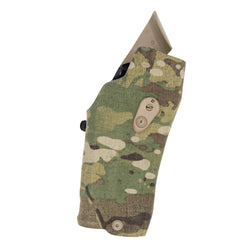If there was ever an iconic pistol it would have to be the Colt Model 1911. It is popular with students of US military history, firearm historians, professional shooters and pretty much anyone who wants to lob a 230-grain bullet downrange. However, there are detractors who think it’s an outdated design, prone to failure, or a low-capacity boomer sidearm.
The detractors have caused a recent issue in that some of these older pistols are coming up on the used marketplace and for better prices than you might think if you don’t mind putting in a little work. In the past few months, I’ve added three of these types to my collection for extremely reasonable prices.

All three came to me by way of trade-ins to the Cabela’s Gun Library in Reno, Nevada. I’m not an employee or affiliated with the chain beyond being a typical customer.
Historically, 1911 pistols commanded steep prices due to brand name or custom work. However, with the decline in .45 ACP as a popular self-defense cartridge in favor of 9mm striker-fired pistols and the influx of lower-priced 1911 clones from Turkey and the Philippines; there’s just not the high demand that there used to be.
Exhibit A: US Property Marked Colt M1911

This one came in as a poor example of a wartime-issued pistol made in 1918. The finish was almost gone, it needed a mainspring housing, firing pin, firing pin spring, mainspring, mainspring cap, firing pin retainer, and of course a magazine.
The barrel bushing was a commercial replacement, and the grips were the WW 2 plastic-type instead of the original double-diamond checkered walnut grips. To add insult to injury, the grip screws were not even the proper screws for the pistol, and they ruined the original grip bushings.

Still, it was a “Black Army” variant based on the serial number and the heart-shaped cut outs under the grips. While not exactly rare, it’s still kind of cool to some of us.
I walked home with this one for $375 and was able to replace almost all the missing and ruined parts from my stash of Colt military parts from the same era, except for the grip panels, which were replaced by a set of Hogue hardwood grips in a similar pattern yet darker grain.
The one part I did not replace was the barrel bushing because that aftermarket bushing was made by The Micro Sight Company in Belmont, California, and that was a company in the industry for whom I worked in the late 1990s.
George Thannisch, formerly a gunsmith at King’s Gunworks in San Francisco developed an adjustable rear sight to fit the 1911 pattern dovetail and founded Micro Sight during WW2 based on producing his design. He later developed the bushing in question as a response to the problems that Colt had with broken bushings and to improve the lock-up. For those reasons, I left the bushing on this 1911 as it was a part of its history.
Exhibit B: Colt 1991 Combat Commander
For about the same price I paid for the 1911, I picked up a Colt 1991 Combat Commander. The 1991 is a low-frills option in the Colt catalog. These pistols feature a Series-80 style firing pin safety that some shooters hate, but quite a few appreciate.
On this pistol, the slide had been chrome plated, and very faint small engravings can be seen. The most prominent was “Rangers” on the right-hand side of the pistol. It came with Ajax Black Pearlite grips that were badly damaged and missing a medallion on one side. The sights were obviously aftermarket and an improvement over the vestigial sights found on so many basic 1911 pattern pistols.

The slide stop had a number engraved on it, so it was swapped out for a stainless-steel version. The broken grips were replaced by a set of indestructible G10 grips. Initial range sessions proved to be very promising with this pistol.


Future upgrades might include stripping the chrome finish and refinishing in Cerakote, but all seems well with this sub-$300 Colt Combat Commander.
Exhibit C: Para Ordnance P-12
Para Ordnance was a company that made double-stack 1911s with magazine capacities between 10 and 15 rounds. The P-12 was based on the compact Officer’s size and held 12 rounds of 45 ACP as the name implies.
It was also a company I swore off years ago for a different reason.
It was 1996 and I was working for Century International Arms in Boca Raton, Florida but I wanted to leave the milsurp arena and get into a company that produced modern firearms. On the way home from a Friday night of moderate drinking I stopped in a convenience store and snagged a random gun magazine. As I was flipping through it at home an ad caught my attention from Para because the address on the frame read “Fort Lauderdale, FL” the next town up the road.
At 2 a.m. Saturday morning, I sent an email asking if they were producing guns in Fort Lauderdale or if it was where they were importing them from Canada. I mistakenly said slide instead of frame and almost immediately a chain of emails began that were so rude and condescending, that I swore I’d never do a thing to promote their company much less work for them or own one of their guns. Para ended up running themselves into the ground and even Remington/Freedom Group buying them out couldn’t save them. The company is no more, and one thing intrigued me about this gun: Para’s name/roll mark was not on the slide.

The previous owner had replaced it with a Colt Commander slide ever so slightly longer than the Officer size at 4.5 inches as opposed to 3.5 inches. He also added a match-grade Kart barrel and bushing fitted with Heine Straight-8 night sights, a Gunsite low ride safety, beaver tail grip safety, Videcki trigger, and a titanium hammer, firing pin, and mainspring cap. All the heavy lifting was done on this one.
I flirted with a few sets of aftermarket grips but in all honesty, none of them felt as good as the stock Paras. Perhaps the only real investment made into this one was procuring six spare factory 12-round magazines on closeout for $12 each.

Each one of these pistols has been making regular trips to the range and there have been zero malfunctions. Although my days of carrying a 1911 are pretty much in the past. I still enjoy shooting them. That’s why there’s no rush to refinish the Para or the Combat Commander. The Black Army 1911 will more than likely remain in its current state as refinishing a wartime relic almost always completely destroys any semblance of value.
Always remember, every firearm does not have to be the one you are going to use for concealed carry, home defense or even hunting. Sometimes the only job a firearm needs is to just have fun with at the range.









